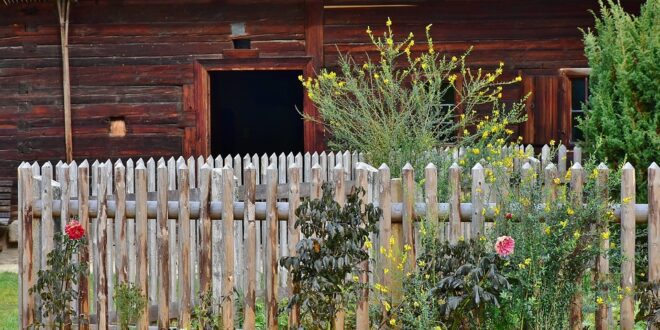Why Restore Historic Buildings? Top 20 Reasons
We often hear about how important it is to preserve historic buildings, but have you ever wondered why? There are plenty of reasons to do so, both practical and sentimental, and they all add up to create a compelling argument for restoration.
1. History and Heritage
These buildings hold clues to the past, telling stories about the communities and people who came before us. They are a tangible reminder of our cultural enrichment and a symbol of what our ancestors considered important. Restoring these buildings not only ensures their physical preservation but also helps people connect to their roots.
2. Community Cohesion
Historic buildings provide a sense of place and continuity that fosters a sense of community and belonging. They bring together different generations and can serve as landmarks, meeting places, or cultural hubs. In some cases, they are vital for the survival of local economies and the tourism industry – think of all those charming old towns with fascinating historical structures that attract visitors year-round.
3. Sustainability
Yes, restoring historic buildings can be an environmentally responsible choice. Rather than demolishing an old structure and creating waste, restoring and repurposing it typically uses fewer resources and energy, while helping to preserve a community’s character.
4. Economic Benefits
Historic buildings can increase property value, attract new businesses and residents, encourage tourism, and stimulate local development. In addition, restoration and adaptive reuse projects can create jobs and contribute to the economy as a whole.
5. Architectural Merit
Many historic buildings have artistic, cultural, or architectural significance that make them worthy of preservation. They have unique features or elements that define a particular style or era, and that inspire creativity and appreciation, often going beyond the original purpose of the structure.
6. Building Craftsmanship
Historic structures sometimes showcase traditional building techniques, materials, or designs that are no longer in use. By restoring, these techniques can be passed down to future craftsmen and the broader community, thus keeping a valuable tradition alive.
7. Educational Opportunities
Restoring historic buildings provides opportunities for education and appreciation, both for students and the general public. It might involve educational and outreach programs, cultural events, tours, or exhibitions, fostering learning and creativity.
8. Civic Pride
A well-restored building can be a source of civic pride. Whether it’s through public art, murals or plaques, they can become part of the “identity” of a town or city, highlighting significant milestones and individuals or demonstrating a collective effort to maintain and celebrate local heritage.
9. Psychological benefits
Historic buildings can have a calming and beneficial impact on mental health. They provide charm, character and human-scale environments that soothe our psyche and evoke a sense of nostalgia. Moreover, restoring a crumbling building and seeing it renewed and vibrant can infuse communities with positivity and optimism, especially in disadvantaged areas.
10. Social justice
Restoring historic buildings in underprivileged or traditionally marginalized communities can play a vital role in helping residents reclaim their neighborhood’s narrative, redefine spaces previously associated with hardship or oppression, and assert a sense of ownership and pride.
11. Field research
Preserving an old building can also provide valuable insight into how past societies lived, worked, organized and solved problems, giving historians, sociologists and urban planners invaluable data for their fieldwork. Additionally, restoration projects documented through videos or photographs, serve as primary resources for teaching future generations about social history.
12. Resilience-boosting
Restoration promotes building resilience, by safeguarding them against wear and tear through climate, natural disaster immunity or emergencies caused by local geophysical characteristics in a given area.
13. Sense of charm and ambience
When trees grow amidst the buildings on historic roads, old homes and noteworthy institutions add a vibrant ambience further accentuated with antique verdure on property or storefronts. Properties within a community given new life are gradually filled with positivity, beckoning the people embracing these sites with feeling nostalgic, tranquility, gracefulness and ineffable serenity found in classic favorites.
14. Shared historical iconography
Historic buildings often age gracefully exhibiting antique magnificence with stories encapsulated within their architecture. Enshrined within photographs, old economic hubs town halls evocative memories of summits and convivals serve as connecting channels that materialize the missions both persons and neighbors hoped to embody.
15. Adaptive reuse
Rehabilitating century-old structures to accommodate contemporary needs provides benefits in spatial and resource use saving us from more intrusions in nature.
16. Light-filled day-of wellness
Historic building complexes that bring streams of warmth or indoor plants with ample ceilings gradually boost harmony within these spaces. A “popular demand” might focus on majestic modern copiousness: but airy, voluminous and over-the-top spaces often evaporate the age-old cottages inherited from our forefathers where happiness and contentment meet a wholeness close to perfect. Streaking rays simultaneously meet charm whilst demonstrating humbling beauty pervading through to the outdoors yielding balance more difficult to acquire in lesser designed, unaffordable spaces.
17. Relating to Historic sign’figures
Historic buildings also commonly house related artifacts like antique furnishings, tokens of importance and furnishings that have legacy representation. New buyers cherish these elements of close contact with often-impressive cultural items, which also impact their wellbeing and motivation for working harder for future postures they seek. Additionally, owning historic properties maintains public stories which bridge gaps between historically valuable artifact stories that most were kept unaware of in their early years albeit crucial cog proving historical authenticity.
18. Public library
In certain instances, empty historic buildings become libraries for the public referred to through zoning categories as “viable use plans” granting the public easy access to information that might have not been garded well without such plan.
19. Sentimental attachment
Some people identify close links within historical building relics hence decide to conserve them using them presently having interjections often telling locals stories that stop visitors at pause and vice-versa. The communal connection locals feel over enriched artifacts historically appreciated over time surpass resality perceptions per longevity whose attractions occasionally fold together fervrosty.
20. Towering height adaptation
Skyscrapers are not the only types of buildings that command admiration or respect when viewed form the outside, rehabilitated historic twin brick or triple loaded townhomes seen with trellis made of plant overflowing the baskets working overtime to conceal leading edges of beautifully proportioned and architecturally appealing, pleasantly-seared ends of these fabulous layers of different types fillures of days past.
You see, old buildings are much more than aging structures. They are significant parts of the community’s past, present and future: restoring them can contribute to cultural, social and economic goals and future goals. Shall these built environs lose their significance, a crucial part of our heritage would be lost. Give ‘em a facelift—and Allow yourself moments of laughter & Gratitude rring in their humble yet impressive history.
 Mind Uncharted Explore. Discover. Learn.
Mind Uncharted Explore. Discover. Learn.




